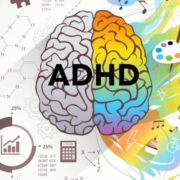
India, a country known for its rich history and diverse culture, is also a land of complex political divisions. The political map of India is a detailed representation of its administrative boundaries and governance structures. It illustrates the divisions within the country, helping us understand how India is organized politically. Let’s explore the key features of India’s political map and what it reveals about the country’s governance.
What Is a Political Map?
A political map shows the boundaries of countries, states, and cities. Unlike physical maps that highlight natural features like mountains and rivers, political maps focus on human-made divisions and administrative boundaries. For India, this includes its states, union territories, and important cities.
Key Features of the Political Map of India
1. States and Union Territories:
States: India is divided into 28 states. Each state has its own government and is responsible for local administration. States like Uttar Pradesh, Maharashtra, and West Bengal are major administrative regions with significant political and economic importance.
Union Territories: India has 8 Union Territories (UTs), including Delhi, Chandigarh, and Ladakh. Unlike states, UTs are governed directly by the Central Government, though some have their own legislatures. For example, Delhi has a legislative assembly, while others like Jammu & Kashmir are administratively managed by the central authorities.
2. Major Cities:
New Delhi: The capital city of India, New Delhi, serves as the seat of the central government. It is an important political and administrative center.
Mumbai: The financial capital of India, Mumbai is the capital of Maharashtra and a major economic hub.
Kolkata: As the capital of West Bengal, Kolkata is a key cultural and economic center in eastern India.
Chennai: The capital of Tamil Nadu, Chennai is an important city in southern India, known for its industrial and cultural significance.
3. Political Divisions:
Regions: India’s states are grouped into different regions based on geographical and cultural similarities. For instance, northern India includes states like Punjab and Uttar Pradesh, while southern India features states such as Karnataka and Tamil Nadu.
Boundaries: The political map shows the boundaries separating states and UTs. These boundaries can be physical (like rivers or mountain ranges) or administrative.
4. Important Border Areas:
International Borders: India shares its borders with several countries, including Pakistan to the northwest, China to the north, Nepal and Bhutan to the northeast, and Bangladesh and Myanmar to the east.
Contested Areas: Some border areas, such as those in Jammu & Kashmir and Ladakh, are subjects of international and domestic disputes.
Understanding the Administrative Structure
Political map of India is not just a geographical representation but also a reflection of its administrative structure:
1. Central Government:
The central government is responsible for national policy-making and governance. It is headquartered in New Delhi and consists of three branches: the Executive (headed by the Prime Minister), the Legislature (Parliament), and the Judiciary (Supreme Court).
2. State Governments:
Each state has its own government, with a Chief Minister as the head. State governments handle local matters such as education, health, and transportation. They operate under the framework of the Indian Constitution, which defines the powers and responsibilities of both state and central governments.
3. Local Administration:
Within states, there are further divisions such as districts and municipalities that handle local administration. These bodies manage day-to-day affairs and local governance.
Importance of the Political Map
1. Educational Tool:
The political map of India is a crucial educational resource. It helps students and researchers understand the country’s administrative divisions and political geography.
2. Navigation and Planning:
For travelers and businesses, knowing the political boundaries helps in planning trips, understanding regional politics, and navigating through different states and UTs.
3. Understanding Governance:
The map provides insights into how governance is structured in India. By looking at the political map, one can understand the distribution of power and the relationships between different administrative regions.
Conclusion
The political map of India is a valuable tool for understanding the country’s administrative and governance structures. By showing the boundaries of states, union territories, and major cities, it offers a clear picture of how India is organized politically. Whether for educational purposes, travel planning, or understanding governance, the political map helps us grasp the complexities of India’s vast and diverse political landscape. So, the next time you look at the map of India, take a moment to appreciate the intricate divisions and structures that shape this vibrant nation.










